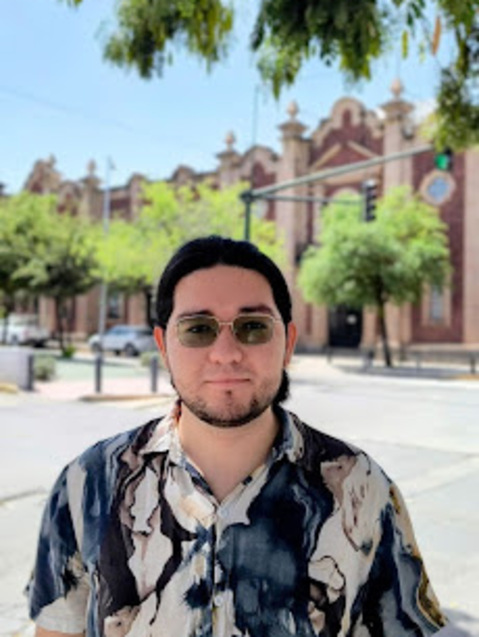
Rehab Scholarships — Find Help Paying for Drug and Alcohol Recovery
A rehab scholarship is when the drug or alcohol treatment program waives either a portion of its costs (partial scholarship) or up to 100% of its treatment costs (full scholarship) for applicants in need. Rehab grant funds, on the other hand, are issued directly to addiction treatment and mental health programs, then disseminated among clients. Mandated by Congress, these noncompetitive grant funds make it possible for many programs to offer financial aid. As is the case with most assistance programs, there are stipulations for funding.
Here are some important details about rehab scholarships:
- Rehab facilities set aside a certain amount of income each year to offer scholarships. Financial aid is offered until all the allotted money is used.
- Rehab scholarships are generally needs-based. That means aid is only offered to those who are under- or uninsured and have no other financial means or assets to pay for treatment.
- For additional funding support, rehab scholarships can be combined with private insurance, Medicare, or Medicaid if those plans do not cover 100% of treatment costs.
- Not every rehab program offers scholarships. That means you’ll need to do some online research, create a list of rehabs in your area, then call each facility to ask if they offer scholarships.
Finding a rehab scholarship doesn’t need to be difficult. Start by browsing our treatment directory and making a list of programs that suit your needs. Next, call each facility on your list and ask if they offer rehab scholarships.
For rehabs that offer scholarships, ask for details on their application process. Some programs have an intake manager who can take your information and application over the phone, some allow you to apply online, and some require you to apply in person.
A few things to keep in mind:
- Be prepared to explain your personal story and why you need financial assistance to access addiction treatment services.
- Gather and be prepared to share personal and financial documents (i.e., proof of income, checking and savings account balances, monthly expenses, proof of insurance coverage, etc.)
- Understand that competition for rehab scholarships is fierce; that means you may have to submit numerous applications before getting a positive response.
- Individual rehabs are independently run and commonly provide scholarships to cover the cost of one of their programs. The scholarship amount depends on the treatment center and available funds.
- Corporations (both for-profit and nonprofit) that own and operate rehab facilities sometimes offer treatment scholarships to cover the cost of their programs.
- Nonprofit organizations, including religious rehab facilities, often offer scholarships for those admitted to their treatment programs. Providing free or affordable treatment is typically their focus.
Rehab Centers By State
Select a state to find options for rehab centers in your area.
$2,250 in College Scholarships to be Awarded
Are you a full-time college student in the U.S.? Do you have a passion for raising awareness about the dangers associated with substance abuse and addiction?
If you answered “yes” to both questions, you’ll want to enter the Addictions.com Scholarship Contest. Three scholarships will be awarded to qualified college students who write the winning essays (for first, second, and third places).
By providing financial assistance to help pay for books, tuition, or daily expenses, we hope to encourage more students to get involved and become advocates who will raise awareness about the risks and dangers of addiction.
How to Enter
- Review Eligibility: Before entering the contest, review the Terms/Conditions requirements and the rules and regulations below to make sure you qualify.
- Complete Application: Complete the contest application form below providing all required information.
- Submit: Once your essay is written, save as a Word Doc or PDF and submit with your scholarship contest application.
Essay Topic and Guidelines
Essay must be submitted with the application, which should include the author’s name, address, phone number, email address, college (including the date of graduation), and student ID number.
- All entries must be typed, double-spaced, and saved as a Word Doc or PDF.
- Do not add pictures or graphics
- Essays that do not meet the word count requirement will be eliminated. (The essay title or added references / footnotes do not contribute to the total word count.)
- AI-generated essays will not be accepted
- A contestant’s teacher, counselor, or parent may check the essay for punctuation, grammar, and/or spelling, but the essay MUST BE the original work of the student making the submission.
- Contestants will be judged based solely on their essay.
USING YOUR OWN WORDS, PLEASE ANSWER THE FOLLOWING QUESTION IN 500-700 WORDS:
“The best treatment is prevention.” This is a concept that doctors use to help their patients for everything from infection to heart disease. The same can be said for addiction: it’s best to prevent it from developing than to try to treat it after it has a hold on a person. What can be done on a large scale to prevent drug and alcohol addiction before it begins? You might consider actions that can be taken by communities, schools, loved ones, government organizations, or all of the above.
Rules and Regulations
- Essay must be the original work of the contestant. Plagiarism will automatically disqualify your entry.
- Contest awards and decisions are final unless an entrant is disqualified.
- Essay submissions that do not meet the requirements (listed above) or sent after the application deadline will not be considered.
- Essay award winners grant Addictions.com the right to use their essay content in connection with this contest, marketing efforts, and publication of the essay, as well as the right to use the winners’ names and/or identifying information to promote the contest.
- Addictions.com will read and judge each eligible essay submitted on time; essays submitted after the deadline will not be accepted or read.
- Contest prizes (scholarship award monies) can be revoked after awards are given if entrants are discovered to be ineligible or found to have broken contest rules.
- Addictions.com reserves the right to change the submission deadline to an earlier deadline if application submissions greatly exceed the number projected. Prospective applicants should enter as early as possible.
- Should Addictions.com have to change any contest rules, we will notify participants via email. If participants are dissatisfied with changes, they may retract their submission.
- All federal, state, and local charges or taxes on prizes must be paid by award winners.
- Essay submissions for this contest become property of Addictions.com to be used and reproduced.
"*" indicates required fields
Fall 2025 College Scholarship Winners

Anniston Brant
(Click to view essay)
Addressing Barriers to Substance Use Treatment Anniston Brant
After graduating with my bachelor’s degree in psychology, I worked for a year as an addictions counselor in Danville, Illinois. While my time in the role was relatively short, it became immediately clear that one of the greatest challenges my clients faced was juggling treatment with the other obligations that came with sobriety; an already challenging process was being made even more difficult.
I noticed two factors that seemed to cause the most conflict: a limited selection of times when services could be offered in person, and the accessibility of services that were offered at more desirable times. Our office was small, staffed by only four employees: a receptionist, an environmental service worker who upkept our facility, and two addictions counselors.
One counselor handled problem-solving courts, individual sessions, and our Intensive Outpatient (IOP) group that met a total of nine hours a week. The other oversaw adolescent services at the local schools, individual sessions, and the Continuing Care (CC) group that met once a week for two hours. Due to limited staffing and scheduling demands, it was often challenging to fit clients in for their required monthly individual sessions, let alone accommodate unexpected or more frequent appointments during times of crisis.
In addition, in-person group sessions for our region were only offered in the morning and early afternoon. Many clients expressed that this made it difficult to find and maintain employment, or that they lacked transportation during the day because their rides were at work. While it seemed obvious that we needed to extend the hours that we provided services, our facility struggled to staff even two daytime counseling positions, let alone expand to cover additional evening services.
For those unable to attend in-person services, groups were offered later in the afternoon or evening through another region, but these were exclusively online. These groups worked for some but only introduced another barrier for many: access to reliable technology. Clients often found that our virtual groups better fit their schedules.
However, many clients in Danville did not have the equipment to log onto our sessions, or they could not afford technology reliable enough to effectively attend groups. To address the issue with in-person services, I believe we must consider multiple aspects.
First, increasing awareness of career opportunities in addiction counseling, particularly in underserved areas, could help fill these positions. Rosecrance had been a resource in Danville for seven years, and I had no idea until a family friend suggested applying.
Because I had never heard anything about the program, it never even crossed my mind that working in this field was a possibility. Promoting these roles through local schools and colleges, community job fairs, or partnerships with behavioral health programs may raise awareness that these roles exist and inspire interest among those already inclined to help others. Additionally, researching and utilizing grants to recruit counselors or provide financial incentives could further encourage professionals to enter and remain in the field.
Second, we need to address the digital divide. In the same way that grants can support hiring efforts, they could also be used to supply clients with the basic tools needed for virtual care, such as reliable internet or devices to access services. These are not luxuries in a recovery setting; they are essential resources for staying connected to care.
My time as an addictions counselor taught me that getting people into treatment is not enough. We must also reduce the structural and socioeconomic barriers that make treatment feel inaccessible. Not only does this prevent people in need from getting help, but it also adds unnecessary stressors, which can trigger relapses.
By investing in both employees that support recovery and the clients that we are passionate to serve, we can help ensure that people struggling with addiction receive the help they need, when and how they need it.

Jacelyn Desmarais
(Click to view essay)
One Family’s Journey Toward Healing
My husband, Darren, is the heart of our family. But for years, he battled a demon that threatened to tear us apart—his struggle with alcohol addiction. Last July, we reached a breaking point that changed everything. We were at a concert in Chicago, celebrating my sister’s birthday—a night that should have been full of joy and laughter. Instead, by the time the second band played, Darren was so drunk that security forcibly removed him and banned him from the venue.
My sister, exhausted and heartbroken, couldn’t stand to see him like that anymore. Instead of spending the night in Chicago as planned, she packed Darren into her car and drove us home—45 long minutes filled with silence and disappointment. This wasn’t the first time something like this happened. Just two weeks earlier, Darren had ruined another family event with his drinking, despite promising me, my sister, my dad, and his parents that he would do better. That night, our girls were safe at my dad’s house for a sleepover, but I was devastated and exhausted. When we got home, I packed a bag and left for my dad’s, desperate for space and clarity.
But the worst was yet to come. Hours later, I found out that Darren had driven back to Chicago—drunk, without his glasses that he desperately needs to see, and with no memory of the trip. He tried to get back into the concert where he was banned, putting himself and others in danger. I was terrified. I realized in that moment that this was bigger than us—it wasn’t just about broken promises; it was about survival. If he didn’t get help, we could lose him—or worse.
The next month, Darren entered outpatient rehab at Gateway Foundation. The program was grueling: Monday through Friday, 5:30 to 9 PM. Darren worked early mornings at the warehouse as a trainer until 4 PM, rushed home to eat and shower, then headed to rehab. Meanwhile, I juggled the new school year, our two young daughters’ busy t-ball and soccer schedules, and a household stretched thin emotionally and financially. The rehab’s flexible evening schedule was vital; without it, Darren couldn’t have stayed employed or cared for our family. This flexibility is a lifeline for many struggling to balance treatment with real-world responsibilities.
Financial hardship shadows us still. The $800 rehab bill weighs heavily alongside our mortgage, a second mortgage from repairing tornado damage, and $6,600 a year for preschool tuition for our girls. Addiction treatment cannot remain a luxury. For families like ours, costs need to be manageable or covered, so no one has to choose between recovery and keeping a roof over their heads.
One of the most healing parts of Darren’s journey was the monthly Family Nights at rehab. The first night, he brought only me; by his final night—the graduation—he brought me, his parents, his brother, and his brother’s fiancée. Those evenings, where loved ones shared food and stories, opened my eyes to the true pain of addiction, not just for the person suffering but for everyone around them.
Feeling seen, heard, and supported alongside Darren gave us strength and hope. Family involvement programs like these break down emotional barriers, help heal relationships, and build essential support systems. On July 21st, Darren celebrated one year of sobriety. I planned a surprise birthday and sobriety party where family and friends gathered to honor his strength and transformation. Watching him surrounded by love, healthy and hopeful, reminded me how critical accessible, compassionate care is—not just for the individual but for whole families and communities.
Our story shows that breaking down barriers to addiction care means more than just affordable treatment. It means programs that respect the realities of work and family life. It means financial support so no one is crushed under the weight of cost. And it means including loved ones every step of the way, fostering connection, understanding, and healing.
Addiction is a disease that affects far more than the person drinking. To truly help those struggling, we must offer more than treatment—we must offer hope, flexibility, support, and dignity. Only then can we ensure that people like Darren don’t just survive addiction—they thrive beyond it.

Olivia Lucal
(Click to view essay)
Breaking the Silence
There’s a certain kind of silence that follows when someone admits they’re struggling. I’ve seen it in my own life—not with drugs or alcohol, but with mental health—and I’ve watched people I care about wrestle with that same silence when their struggle took the form of addiction. It is a quiet, heavy thing, made up of shame, stigma, and the fear of being seen as “less than.”
Because of that silence, a lot of people never make it to help. And even when they do, help often feels impossibly out of reach. I think about one of my closest friends from high school, who started drinking just to make it through the day. Her home life was chaos, and she told me once that alcohol felt like the only thing she could control.
When she finally wanted to stop, everything seemed to stand in her way: there were no treatment providers in our small town, she didn’t have the money to go anywhere else, and the thought of admitting what she was going through to an adult terrified her. I’ve never battled addiction myself, but I have felt the walls closing in when life gets too heavy.
This past year, when my family’s financial situation collapsed, there were nights I thought I would drown under the stress. I worked full-time, barely slept, ate ramen to save money, and tried to pretend like everything was fine. It took everything in me to admit that I needed help.
And when I finally did, the truth was that help wasn’t easy to get. Long waitlists for campus counseling, costs I couldn’t afford, and the fear of falling behind in school almost kept me from trying. That experience made me think about how much harder it must be for people facing addiction. If it was that hard for me—a student with no addiction history—to get basic mental health care, what happens to someone whose battle is more complicated and far more stigmatized?
To break down these barriers, we need to start in three places: accessibility, affordability, and awareness. Accessibility means building a system where help exists where people live—not hours away. Mobile clinics, telehealth options, and treatment programs embedded into schools, workplaces, and community centers can make care a part of daily life instead of something you have to leave your life behind to reach.
Affordability means that money can’t be the deciding factor in whether someone gets better. Expanding insurance coverage, funding more community-based programs, and supporting nonprofits that provide free or sliding-scale services can make a difference. When my own finances crumbled, I learned how deeply unfair it is to tie care to a person’s ability to pay. And awareness—maybe the most important of all—means fighting the stigma that makes people too afraid to reach for help.
In my own experience, the hardest step was saying, “I can’t do this alone.” For addiction, that first step can feel impossible. If we treated addiction like we treat any other illness, with compassion instead of judgment, more people would take that step sooner. I don’t have all the answers. I’m still figuring out how to navigate my own challenges, and I’ve learned firsthand how heavy life can feel when the weight of survival takes over everything else.
But that experience has also made me more determined to be part of a world that offers people the same second chances I’ve needed. Breaking down barriers to addiction care isn’t just about programs or policies. It’s about remembering that behind every statistic is a person, scared and hurting, just trying to stand up again. I know what it feels like to think you have to do it all alone. And I know how powerful it is to finally be told: you don’t.
Spring 2025 College Scholarship Winners

Ignacio De Los Santos
(Click to view essay)
Addiction’s Wide-Ranging Impact
Addiction is a devastating disease that doesn’t just affect the individual struggling with it—it affects their entire support system. One of the hardest things about addiction is the isolation it brings. People caught in its grip often push away those who love them the most, making it even harder for them to break free. But having a strong support system is one of the most crucial elements of recovery. I know this firsthand because my cousin, Jose, battled alcoholism for years. My family and I did everything we could to help him, but unfortunately, he passed away in 2017. His journey showed me just how vital it is to have family, friends, and peers in recovery as a support system.
Family plays a crucial role in addiction recovery. They are often the first to notice when something is wrong and the ones who fight the hardest to help their loved ones get better. With Jose, we tried everything—rehab programs, counseling, and interventions—but the disease had a strong hold on him. Looking back, I realize that one of the biggest challenges was that he felt ashamed to ask for help. Addiction often comes with guilt and self-hatred, and those feelings make it difficult for a person to open up. But when family members offer unconditional love, patience, and encouragement, it can make a world of difference. Even though Jose’s story had a heartbreaking ending, I know that family support can be a lifeline for someone willing to fight for their recovery.
Friends also play a big part in recovery. True friends don’t just enable destructive behavior—they challenge their loved ones to be better. Addiction often causes people to pull away from their social circles, but a good friend won’t let them disappear without a fight. I remember Jose had a childhood friend who never gave up on him. Even when Jose pushed him away, he would still check in, remind him of his worth, and encourage him to get help. Sometimes, having just one friend who refuses to give up can be the difference between someone seeking help or falling deeper into addiction. Friends can also help keep a person accountable, whether by encouraging them to attend meetings, supporting healthy habits, or simply being there to listen without judgment.
Peers in recovery provide a unique kind of support that family and friends often can’t. People who have experienced addiction firsthand understand the struggle in a way that others may not. Support groups like Alcoholics Anonymous or Narcotics Anonymous give people a sense of belonging and community. When Jose was in rehab, he said that talking to others who had been in his shoes made him feel less alone. Knowing that someone else had walked the same path and made it out on the other side gave him hope, even if only for a short time. That’s why peer support is so powerful—it shows that recovery is possible and that no one has to go through it alone.
Addiction is a tough battle, and not every story has a happy ending. Losing Jose was one of the hardest things my family has ever gone through. But his struggle taught me the importance of support systems in recovery. No one can fight addiction alone. Family, friends, and peers in recovery all play a role in helping someone find the strength to heal. It takes patience, love, and sometimes even tough love, but showing up and being there for someone in their darkest moments can make all the difference. Recovery is possible, but it takes a village to make it happen.

Maria Azucena Vargas Olivares
(Click to view essay)
The Power Of Connection
Addiction can be an incredibly isolating experience. As individuals spiral deeper into their addiction, they often find themselves withdrawing from others, pushing away family, friends, and loved ones. This isolation can worsen the problem, leading to feelings of loneliness, hopelessness, and even despair. However, it’s during these difficult moments that the importance of a strong support network becomes clear. Family members, friends, and peers in recovery can play crucial roles in an individual’s journey toward recovery, offering emotional support, encouragement, and understanding.
When someone is going through addiction, the emotional toll can be overwhelming. A person may feel trapped in a cycle of shame, guilt, or anger, which can lead to an even greater sense of isolation. In these moments, it is easy to feel as if no one understands what you are going through, which only deepens the isolation. This is where family can be a lifeline. Family members can provide emotional support that is often essential to breaking the cycle of isolation. For example, simply having someone to talk to or lean on can help reduce feelings of loneliness and give a sense of hope. Emotional support is often the most important thing someone in recovery needs. It isn’t necessarily about advice or solving problems, but rather about having a safe space where someone can express their thoughts, feelings, and struggles without judgment. The act of being listened to can be incredibly powerful and may provide the strength needed to push forward in recover
Isolation also feeds into the dangerous cycle of overthinking. When someone is struggling with addiction, their mind can easily become consumed by negative thoughts, doubts, and insecurities. Overthinking can make a person feel stuck and can amplify the sense of hopelessness that often accompanies addiction. When someone has no one to listen to them, their mind can spiral further into darker places. Talking to a trusted family member, friend, or peer in recovery can offer a fresh perspective and help break that cycle. Simply having someone who listens can bring clarity and allow for emotional release, preventing those overwhelming thoughts from taking control. The act of sharing one’s inner world with another human being can be healing in itself
That being said, it’s important to understand that everyone in recovery needs space at times. It is natural for individuals to want some time alone to reflect, process, or recharge. However, prolonged isolation can be harmful. When someone expresses a need for space, it’s important to respect that, but also to remain vigilant. Isolation should never be allowed to last too long, as it can worsen emotional and mental health. Family members and friends must strike a balance, giving the person in recovery enough space to feel in control, but also making sure that they don’t become so distant that they lose touch with their support network. Checking in periodically and offering support without being overwhelming can show that care and concern remain, and that the person is not alone.
Peer support is also invaluable in the recovery process. Individuals who are themselves in recovery can offer a unique and empathetic understanding of the challenges that come with addiction. Peers in recovery have lived through similar struggles and can relate to the feelings of guilt, shame, or frustration that can arise during recovery. These connections provide a sense of solidarity and hope, as they serve as a reminder that recovery is possible. Often, peers can offer practical advice or coping strategies that worked for them, and simply knowing that someone else has made it through similar struggles can be incredibly encouraging. Support groups, 12-step programs, or online communities of people in recovery can provide the social connections needed to rebuild trust, share experiences, and hold each other accountable
Ultimately, the role of family, friends, and peers in recovery is vital. They provide emotional support, encourage open communication, help prevent isolation, and offer hope for a brighter future. Recovery is often not a straight path, and setbacks will likely occur. However, with the support of those around them, an individual in recovery can gain the strength, resilience, and encouragement needed to continue moving forward. Addiction may attempt to isolate an individual, but with the right support system, it’s possible to overcome this isolation and create a path toward healing, growth, and lasting recovery.
